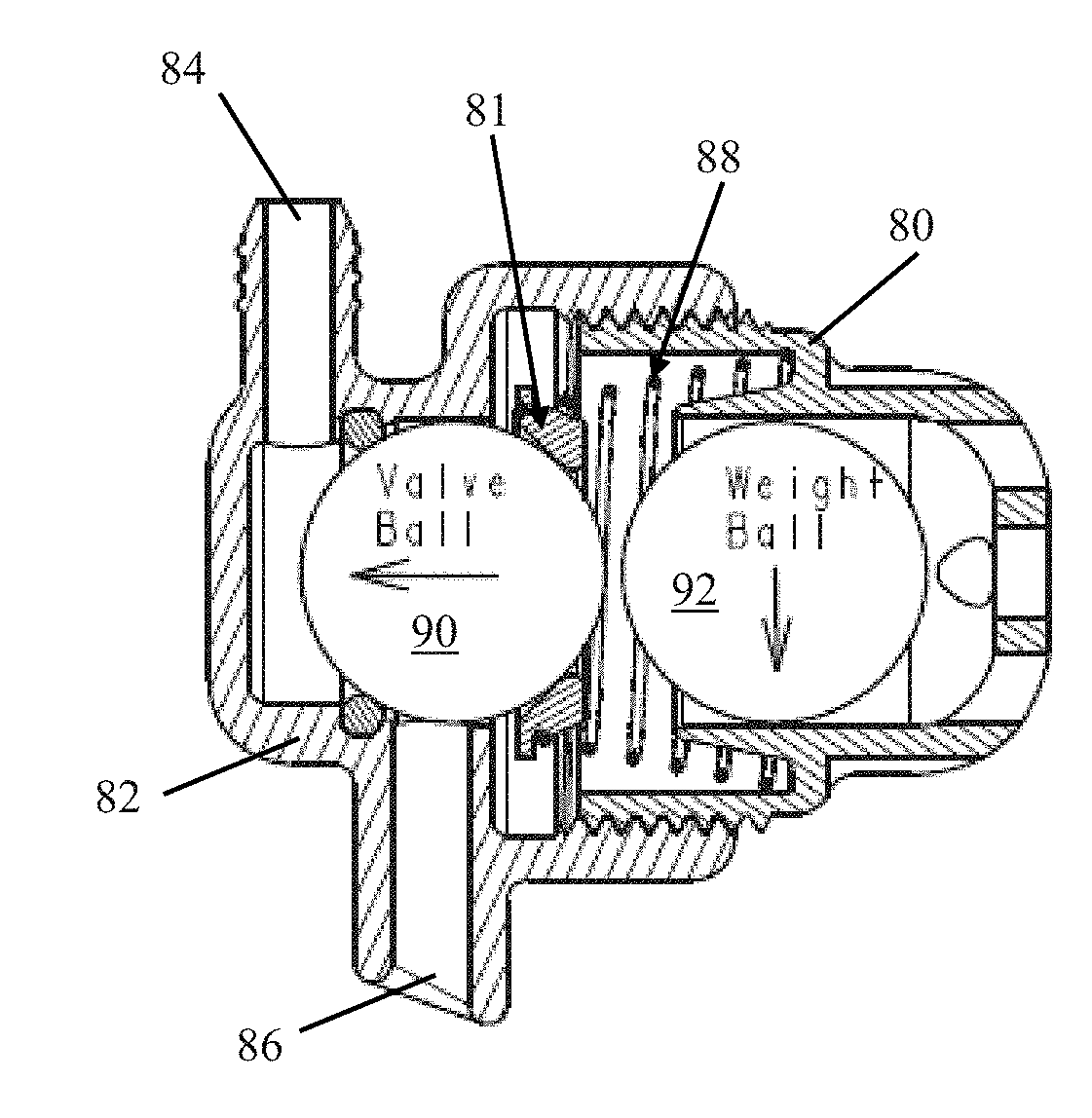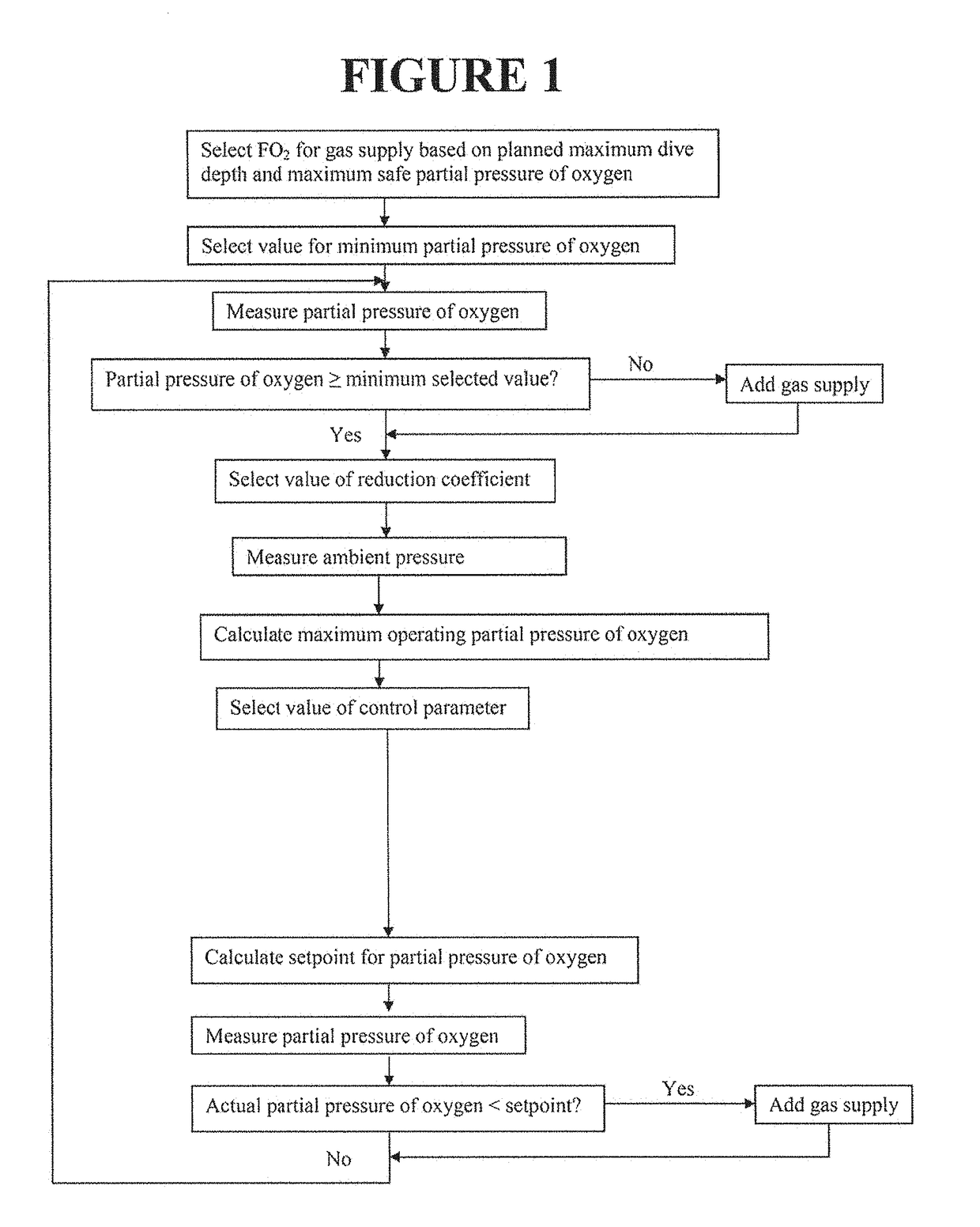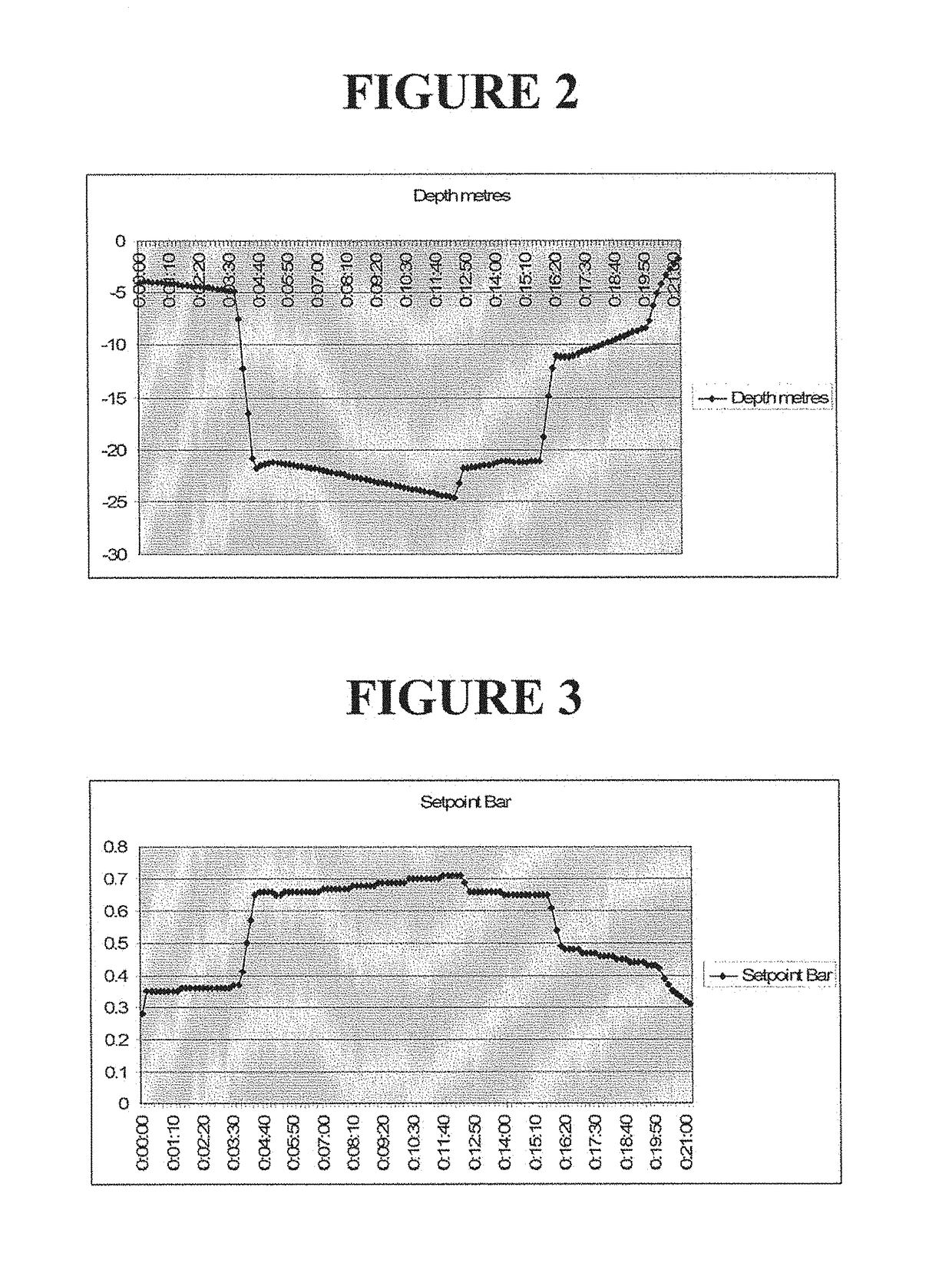Rebreather control parameter system and dive resource management system
a control parameter and breathing technology, applied in the field of breathing system, can solve the problems of oxygen toxicity, death of the diver, unconscious divers, etc., and achieve the effect of minimizing decompression time and minimizing gas venting
- Summary
- Abstract
- Description
- Claims
- Application Information
AI Technical Summary
Benefits of technology
Problems solved by technology
Method used
Image
Examples
Embodiment Construction
[0068]An electro-mechanical rebreather system in accordance with certain embodiments includes various mechanical features and a resource management system. The mechanical features comprise a breathing loop including a front case, a back case, a harness, a canister that houses an Absorbent cartridge an exhale counterlung, an inhale counterlung, a Buoyancy Control Device (BCD), a combined Dive-Surface Valve (DSV) and Bail-out Valve (BOV), a power source, connecting / breathing hoses, a gas supply pressure regulator and a gas supply consisting of either a single high-pressure source containing an oxygen-enriched gas mixture or a source containing pure oxygen in conjunction with a source containing diluent gas, a Loop Control Valve (LCV) and LCV counterlung port / tube, oxygen and CO2 sensors. The electro-mechanical rebreather system comprises three modules, a handset, a Life Support System (LSS) module, and a Sensor Module. The rebreather system further includes an Intelligent Heads Up Dis...
PUM
 Login to View More
Login to View More Abstract
Description
Claims
Application Information
 Login to View More
Login to View More - R&D Engineer
- R&D Manager
- IP Professional
- Industry Leading Data Capabilities
- Powerful AI technology
- Patent DNA Extraction
Browse by: Latest US Patents, China's latest patents, Technical Efficacy Thesaurus, Application Domain, Technology Topic, Popular Technical Reports.
© 2024 PatSnap. All rights reserved.Legal|Privacy policy|Modern Slavery Act Transparency Statement|Sitemap|About US| Contact US: help@patsnap.com










